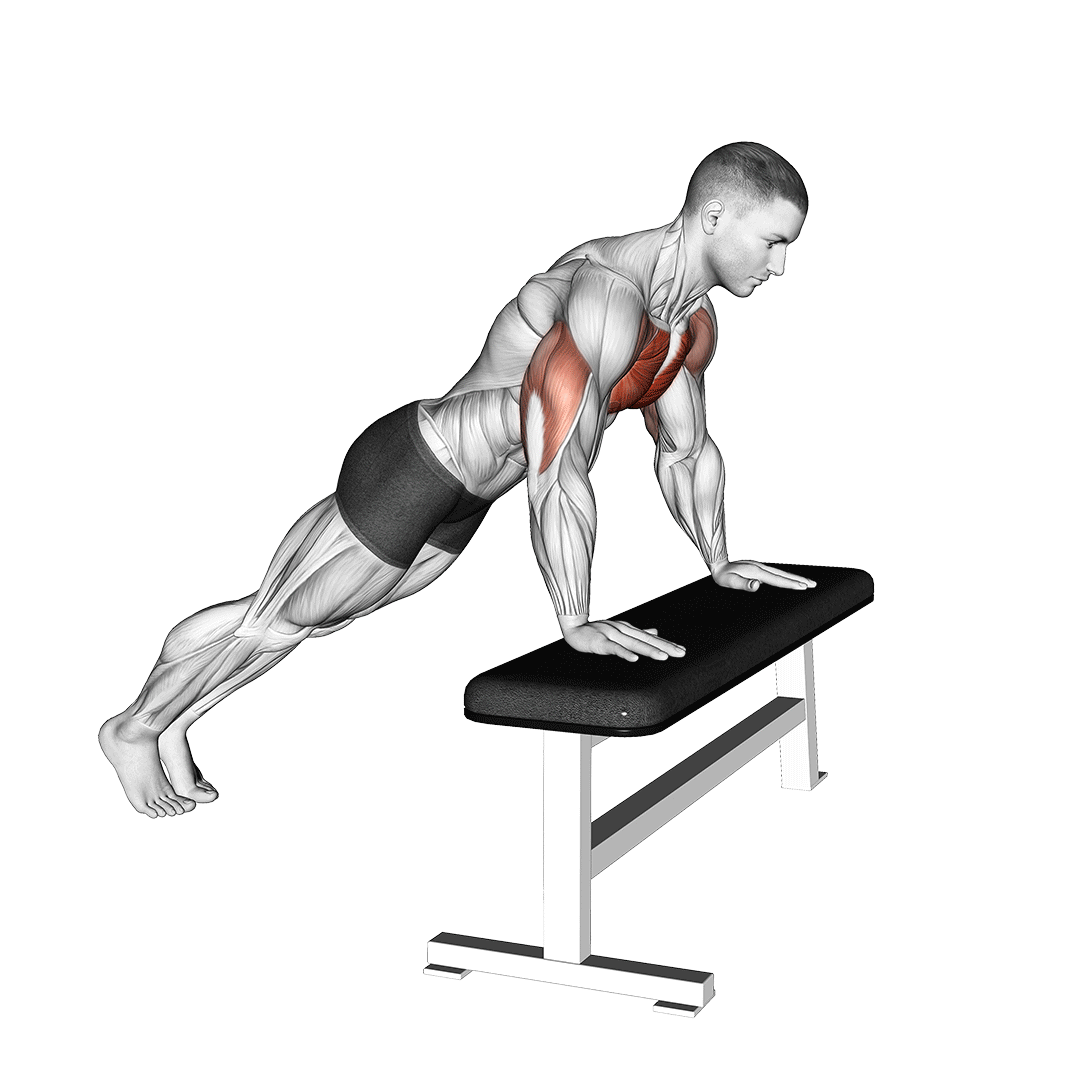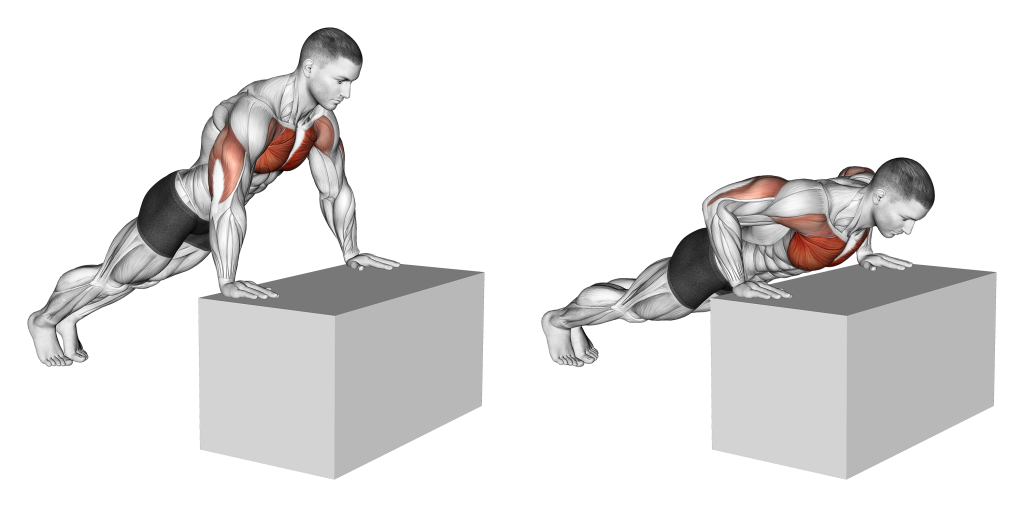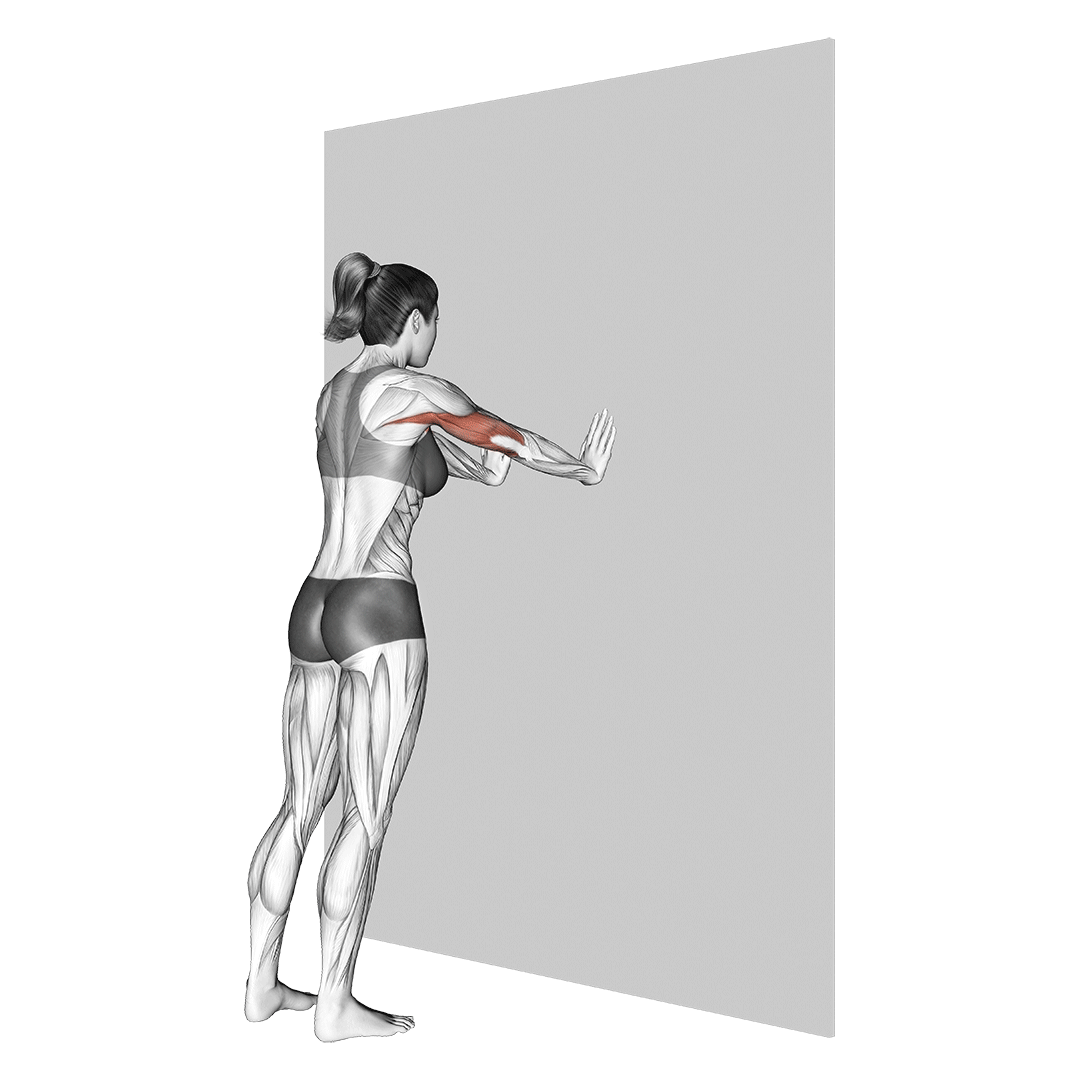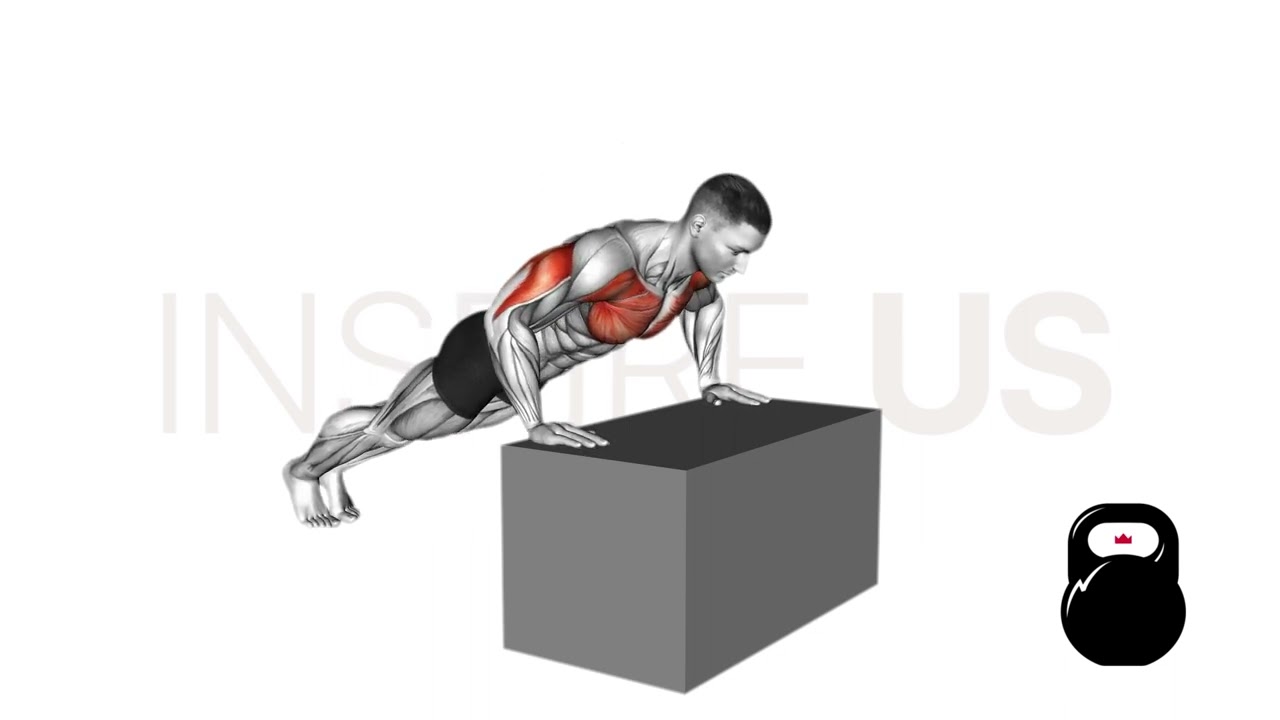Lower Chest Push-ups: Benefits, Muscles Worked, and More
A lower chest push-up is a type of push-up exercise that specifically targets the lower portion of the chest muscles. The incline position shifts more of the body weight onto the lower chest muscles, making them work harder during the exercise.
This variation of the traditional push-up requires less strength and stability as it puts the body in a slightly different position. The lower chest push-up engages the pectoralis major muscle, the anterior deltoids, the triceps, and the serratus anterior. By targeting these muscles, the exercise can help increase upper body strength and improve upper body aesthetics.
Adding the lower chest push-up to a regular workout routine can help enhance upper body strength and create a more defined chest.
What is a Lower Chest Push-up?
The lower chest push-up is a variation of the traditional push-up exercise that involves elevating the upper body by placing the hands on a raised surface such as a bench, step, or even a wall to target the lower chest.

The lower chest push-up is an excellent option for beginners, people with limited mobility, or those recovering from an injury, as it reduces the amount of weight placed on the upper body, making it easier to perform the exercise.
Lower chest push-ups are a great exercise for strengthening the chest, shoulders, triceps, and core muscles. They can also help improve posture and stability and are a good alternative for those who find traditional push-ups too challenging.
As the individual progresses and gets stronger, he or she can gradually lower the height of the raised surface to increase the difficulty of the exercise.
How to Perform a Lower Chest Push-up
Begin by placing the hands on the elevated surface with the fingers facing forward and slightly wider than shoulder-width apart. Keep the feet on the ground and maintain a straight line from the head to the heels.
Next, engage the core muscles and lower the chest toward the elevated surface by bending the elbows while keeping them close to the body. Pause briefly at the bottom of the movement, and then push back up to the starting position.
Remember to focus on keeping the body in a straight line throughout the movement and avoid letting the hips sag or raising the buttocks too high.
Proper form is essential when performing lower chest push up to avoid injury and maximize the benefits of the exercise.
Aim for three sets of 10-15 repetitions, gradually increasing the number of repetitions or sets as the individual gets stronger.
The incline may also be adjusted by using a lower or higher elevated surface to increase the challenge.
Benefits of a Lower Chest Push-up
Targets the Lower Chest Muscles
Lower chest push-ups put more emphasis on the lower portion of the chest muscles, making them work harder than traditional push-ups. This helps to tone and strengthen the lower chest, creating a more defined and sculpted appearance.
Can be Done Anywhere
Lower chest push-ups are a versatile exercise that can be done almost anywhere. All one needs is a sturdy surface such as a bench, step, or sturdy chair to perform the exercise. This makes it a convenient exercise that anyone can incorporate into their daily routine, whether at home or the gym.
Improves Posture
Lower chest push-ups require the individual to engage the core muscles and maintain proper form throughout the exercise. This can help improve posture and reduce the risk of injury by strengthening the muscles that support the spine.
Reduce the Risk of Injury
Lower chest push-ups can help to reduce the risk of injury by strengthening the muscles in the chest, shoulders, and arms. This can make the individual less susceptible to common upper body injuries such as shoulder impingement or rotator cuff injuries.
Increases Upper Body Stability
Lower chest push-ups require a significant amount of upper body stability, as the individual is balancing on an elevated surface. Performing this exercise regularly can improve upper body stability, which can enhance performance in other exercises and activities that require upper body stability.
Muscles Worked by Lower Chest Push-ups
Lower chest push-ups are an excellent exercise for targeting and strengthening the lower chest muscles, as well as other muscles in the upper body. During a lower chest push-up, the primary muscle group worked is the pectoralis major, which is the largest muscle in the chest.

Specifically, the lower fibers of the pectoralis major are activated during this exercise, hence the name "lower chest push-up." The anterior deltoids and triceps are also heavily involved in the movement, providing support and stability to the shoulders and arms.
In addition to these primary muscle groups, lower chest push-ups also engage the serratus anterior, a muscle located on the side of the chest that helps to stabilize the shoulder blade. This muscle is often overlooked in traditional push-ups but is activated to a greater degree during lower chest push-ups due to the elevated surface used for the feet.
By targeting these muscle groups, lower chest push-ups can help improve upper body strength, posture, and stability. It is an effective way to tone and strengthen the chest, shoulders, and arms, and can also help reduce the risk of injury by strengthening the muscles that support the upper body.
Lower Chest Push-up Variations
1. Incline Wall Push-ups
Inclined wall push-ups are a great bodyweight exercise that can be performed anywhere with a wall.
Begin by standing facing the wall, with the feet hip-width apart and about 2-3 feet away from the wall. Place the hands on the wall with the palms facing the wall and slightly wider than shoulder-width apart; The fingers should be pointing upward.

Next, engage the core muscles and lower the chest towards the wall by bending the elbows while keeping them close to the body.
Pause briefly at the bottom of the movement, and then push back up to the starting position.
Remember to focus on keeping the body in a straight line throughout the movement and avoid letting the hips sag or raising the buttocks too high.
They can be modified by changing the distance between the feet and the wall, or by placing the hands at different heights on the wall. Aim for three sets of 10-15 repetitions, gradually increasing the number of repetitions or sets as the individual gets stronger.
2. Stability Ball Push-ups
Begin by placing the hands on the stability ball with the fingers facing forward and slightly wider than shoulder-width apart. The feet should be on the ground and maintain a straight line from the head to the heels.

Next, engage the core muscles and lower the chest towards the stability ball by bending the elbows while keeping them close to the body.
Pause briefly at the bottom of the movement, and then push back up to the starting position.
Remember to focus on keeping the body in a straight line throughout the movement and avoid letting the hips sag or raising the buttocks too high.
Stability ball push-ups require more balance and stability than traditional push-ups, making them a great challenge for the shoulder and core muscles. Aim for three sets of 10-15 repetitions, gradually increasing the number of repetitions or sets as the individual gets stronger.
Final Thoughts
Lower chest push-ups are a versatile exercise that can be modified to suit a range of fitness levels and abilities. They can also help improve the overall fitness level, as they engage the core muscles and promote proper posture.
In summary, lower chest push-ups are a great exercise to add to the workout routine, especially if the individual is new to strength training or is looking for a low-impact alternative to traditional push-ups.
With consistent practice, this will help build upper body strength and improve overall fitness.

